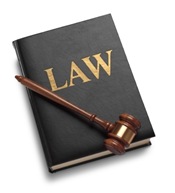 I have always wondered about how the law sees golf and golf accidents. The following outlines one point of view..I am sure there are many others.
I have always wondered about how the law sees golf and golf accidents. The following outlines one point of view..I am sure there are many others.
The following from the New York Times
Golf Courses: A Gold Mine for Lawsuits
By PETER APPLEBOME
Published: December 22, 2010
Clearly, the good doctor meant no harm. It was just an ordinary afternoon of golf when his ball hooked distressingly off line, hitting another golfer in the eye. Cue the lawyers.
This was a Dr. Rogers in 1963 at the Duffins Creek Golf Club in Ontario, Canada, not Dr. Anoop Kapoor at Dix Hills Golf Course on Long Island in 2002, whose errant shot into the eye of Dr. Azaz Anand produced a ruling by the New York State Court of Appeals on Tuesday that the accident was part of the assumed risk of playing golf. But it could have been a similar claim at the Cliftonville Golf Club in Northern Ireland in 1937, the Canadian case Finnie v. Ropponen in 1987, Boozer v. Arizona Country Club in 1967, the Scottish case Andrew v. Stevenson in 1905 or many hundreds of others.
Ever since people have trod meadows and moors intent on striking hard white balls with bottom-weighted clubs, people have been suing one another for shots gone awry. Golf has evolved into the perfect litigation machine, beloved by lawyers, perhaps because so many are making a good living filing suits, defending suits and providing advice on injuries, course and product design, environmental damage, discrimination and almost anything that could conceivably find its way into a courtroom.
“Golf and the law seem to have been made for each other,” writes Craig Brown, a law professor at the University of Western Ontario in “Why Lawyers Love Golf,” published in 2007 in Australia by Scribblers Publishing. “On every fairway, in every stretch of rough, in every clubhouse, in every golf bag, at every swing at the ball, in every set of plans for a new course, in every application for club membership, there lurks a potential lawsuit.”
There’s much logic to this. Golf involves hitting a rock-hard ball at high speed in unpredictable directions. Its devotees often range from the comfortable to the wealthy, the perfect demographic for suing and being sued. Golfers cover all ages, but many are old enough that the misplaced step onto sod covering a hole that is shrugged off by a 20-year-old ends the square-dancing career of a retiree in her 60s. It involves vast areas of land, often including wetlands and endangered species, and tons of fertilizer and pesticides. Its products (balls alone are a three-quarter billion-dollar business in the United States) and brand names (witness the Big Bertie knockoffs of Big Bertha drivers) are the subject of billion-dollar patent infringement and intellectual property claims.
So the legal issues come in all shapes and sizes. Often they involve golf carts, which can tip over and kill or injure their occupants. They involve environmental issues: the Battlefield Golf Club in Virginia was sued for $1.6 billion in 2009 by 400 nearby residents who claimed that 1.5 million tons of fly ash used to construct the course contaminated their well water.
There are many well-known lawsuits. The United States Supreme Court ruled in 2001 that the golfer Casey Martin was entitled to use a cart under the Americans With Disabilities Act because of a painful chronic condition. Augusta National Golf Course has become almost as famous for sex-discrimination lawsuits as it has for the Masters.
But more common are thousands of slip-and-fall suits, claims by homeowners or passing motorists hit by flying golf balls, lawsuits alleging injuries from faulty course design and discrimination suits.
INDEED, the errant golf ball is probably the least of it these days, especially as state after state has adopted a similar standard that only an intentional shot at another golfer or one showing gross and reckless negligence is grounds for a successful lawsuit.
There’s no record of lawsuits per sport, but John H. Minan, a law professor at the University of San Diego and the author of “The Little Green Book of Golf Law,” published by the American Bar Association, said golf probably ranked first or second in lawsuits, challenged only by baseball (metal bats, antitrust issues, lawsuits over stadium locations, Fantasy Baseball rights, spectators injured by foul balls, etc.).
As a result, clubs are increasingly likely, for example, to change course designs in cases in which a golfer could claim an injury was caused by a poorly placed tee area or fairway.
But taking out human frailty may be beyond even the lawyers — hence the adage cited by Professor Minan: For right-handers, a ball that strays to the left is a hook, to the right it’s a slice. If it goes straight it’s a miracle.
“It’s not a legal principle, but it’s reality,” he said.
E-mail: peappl@nytimes.com











